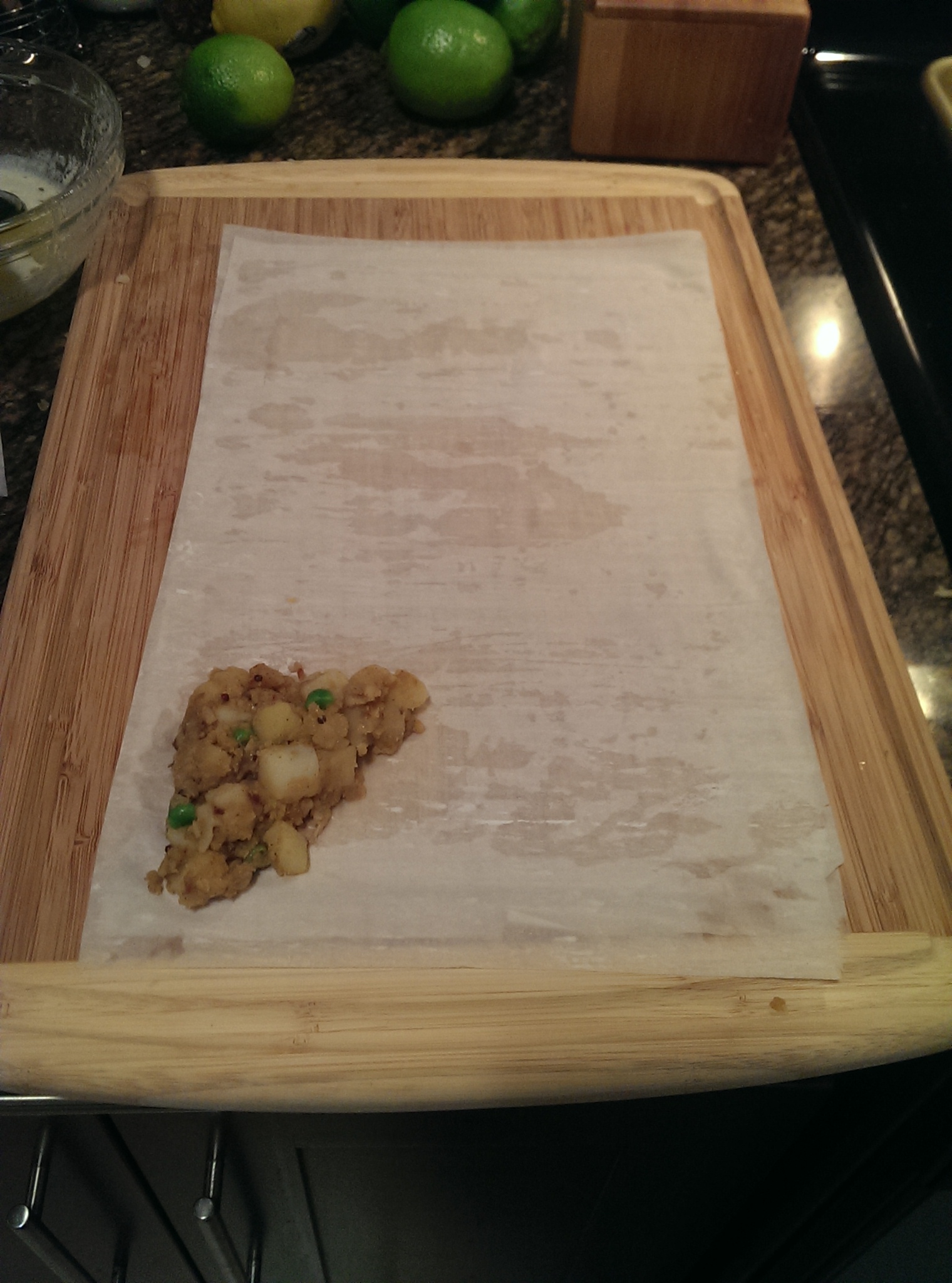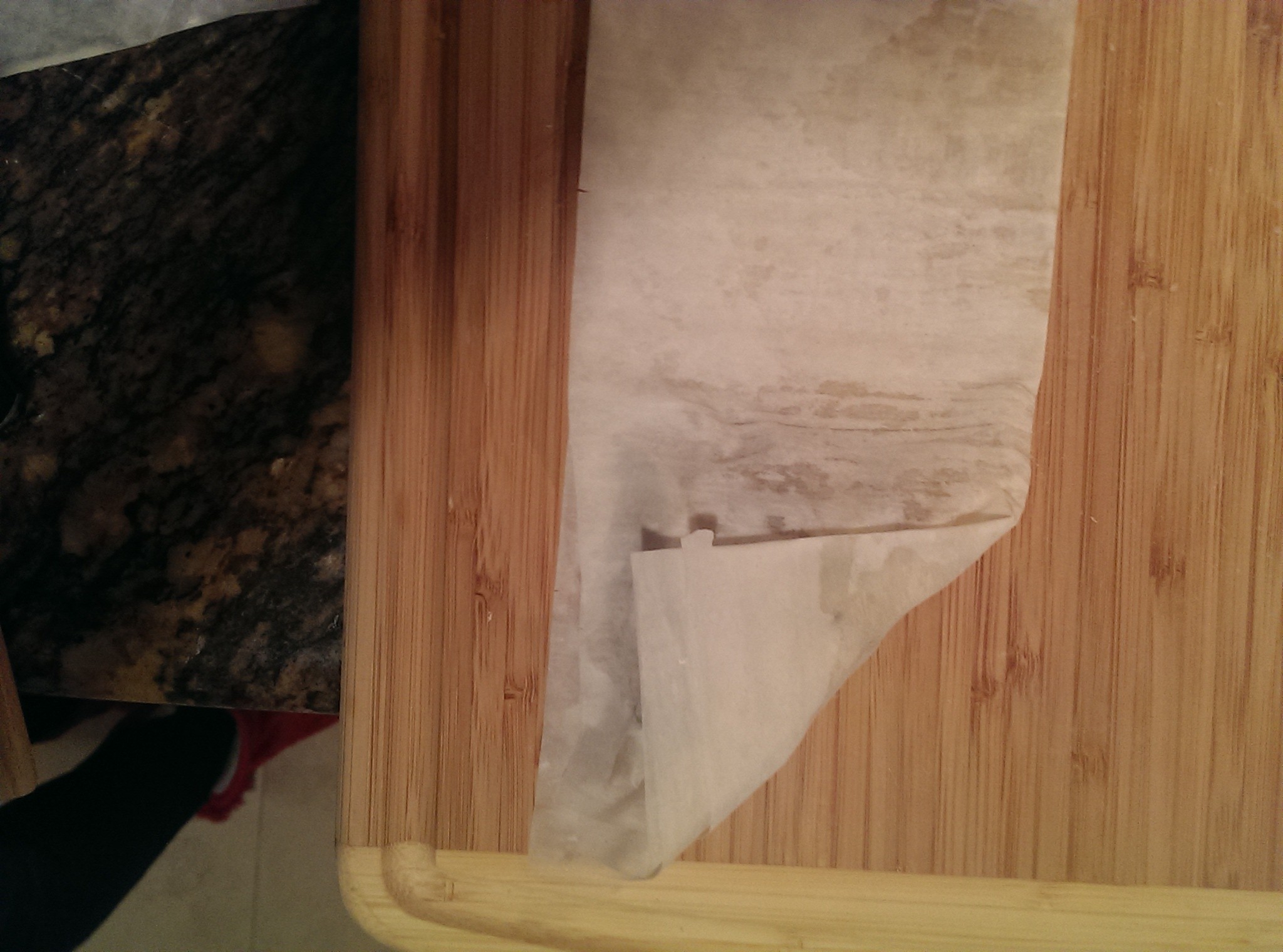Full disclosure: I am Indian. Let me be the first to tell you that these are not traditional samosas. I feel okay about that because they taste really good. I also feel guilty for sometimes being a little judgey towards my beloved ATK when they use non-traditional ingredients in ethnic cuisine…oops.

I decided to pursue the non-traditional path because of my grandma. Every time I go to visit her, she has her freezer stocked with frozen samosas, and the brand she buys uses phyllo dough. I wanted to create a recipe that reminded me of my sweet grandma and the time I’ve spent hoarding samosas on her couch. I’ve included a list of deviations from a traditional samosa recipe for educational purposes (mostly so you can hold your own against any Indians that ask you how you made them!).
- There’s no ground ginger or minced peppers. Why, you ask? Because I neglected to put either on my grocery list, and I was too lazy to go back. I already had my fuzzy slippers on, okay?
- I used phyllo dough in place of the traditional roti/chapati (different words for Indian flatbread, thinner than – and in my opinion, inferior to – naan). I knew I wanted to bake these (see #3), and the traditional dough would have to be swapped for butter-heavy pastry in order to yield a similar texture. The phyllo dough seemed to be the least fattening baked alternative. For the record, samosas are typically fried in oil that starts at a low temperature and is gradually raised – this yields a crispy exterior and a soft interior. If you fry often, you know that an oil temperature below 350 results in whatever you’re frying absorbing the oil.
- I didn’t fry them. It’s January. I know you guys are not looking for a fried-food fest right now. (PSA: these are not low fat. Sorry. Still better than ordering takeout.)

If you’re okay with all of the aforementioned deviations, I think you’ll really enjoy this recipe. I do have one major recommendation for you: if you don’t have Indian spices in your spice cabinet, I suggest that you adventure over to an Indian market to purchase them. If you’re in an area that doesn’t have any Indian markets, you could very nicely ask your local Indian restaurant for the chaat masala and garam masala, or you could buy them online. And just in case you are super new to Indian cuisine and/or Indian cooking, I’m going to put some more info about the spices and cuisine after the recipe, so make sure to keep scrolling down if you’re interested.

ingredients
- 3 russet potatoes, boiled, peeled, and diced 1/4 inch
- 3 TBSP ghee (clarified butter; available at most supermarkets)
- 1 medium onion, 1/4 inch dice
- 2 cloves garlic, minced
- 1/2 tsp garam masala
- 1/2 tsp turmeric (optional; for color only)
- 1/4 tsp cayenne pepper
- 1 tsp brown mustard seed
- 2 tsp chaat masala
- 1/2 tsp chili powder
- 1/3 - 1/2 C frozen peas
- salt to taste
- Phyllo dough, thawed and unrolled
- 8 TBSP ghee, melted
- 1 egg, lightly beaten with 1 TBSP water
instructions
- Mise en place, and read this recipe all the way through.
- Combine all spices in a small bowl. Set aside. Do not include any salt, you will add this to taste later.
- Heat 3 TBSP ghee in a large skillet. Add onions, and cook until the edges are lightly browned.
- Add garlic and spice mixture and cook until fragrant, about 1 minute.
- Add potatoes and stir to coat completely. You do not need to be too gentle when stirring, it's ok to break up some of the potatoes.
- Remove from heat and add desired amount of frozen peas. The heat of the potatoes will warm the peas, while the frozen peas will help cool the entire mixture.
- Add salt to taste, and let the mixture cool completely.
- Lay one sheet of phyllo down vertically. Brush with a small amount of melted butter, and lay a second sheet directly on top of the first. You only need enough butter to help the phyllo sheets adhere; the entire sheet does not need to be coated in butter for this to happen.
- Spoon 2 1/2 - 3 TBSP cooled filling onto the bottom left part of the sheet and form into a triangle (see image below).
- Brush the phyllo with butter, and fold in half so that you have one long column.
- Brush the phyllo with butter, and fold the triangle at the bottom right up so that it is on top of the filling (see image below).
- Fold the triangle up, then over to the right, then up, then over to the left. Continue folding until all of the dough has been folded over the filling.
- If needed, brush butter over the top and edges of the samosa to help seal it.
- Transfer to a rimmed baking sheet and repeat until all samosas have been rolled.
- Brush the tops of all samosas with the egg wash, and bake in a 400 degree oven for 15-20 minutes, until golden brown.
- Serve immediately, or cool completely and refrigerate overnight to reheat and serve the following day. Serve with chutney, mint-cilantro dipping sauce, or spicy pickle.


So you’ve seen the photos and the recipe, but may still have some questions about the spices and how a traditional samosa is made. Wikipedia has some interesting information on where samosas originated and the regional varieties that can be found around the globe. As you can see, the traditional Indian samosas look nothing like the ones I made. The dough used is similar to a pizza dough, but does not contain any yeast. Many recipes that I found actually called for a pastry dough more akin to a pie crust than a pizza dough, which is no more traditional than the phyllo dough I used in my recipe. You may also be wondering what “masala” is, and why it’s part of both spice names and popular dishes (like tikka masala and masala chai). “Masala” really just means “spice mix.” Masala chai is the traditional black tea steeped in milk and brewed with spices like cardamom, clove, and cinnamon. Tikka masala is a dish (usually chicken but can also be paneer, which is cheese) that is served in a tomato and cream sauce flavored with lots of delicious spices. In my opinion, it is the penne alla vodka of Indian cuisine.
So why did I tell you to use garam masala AND chaat masala? And what is chaat? Garam masala is a pretty standard spice mixture used in Indian cuisine. An Indian household would, most likely, mix their own garam masala using pungent spices such as cinnamon, cardamom, cumin, and pepper. Chaat masala is essentially garam masala mellowed with the addition of mango powder, chili powder, and salt. Chaat masala has a more balanced flavor than garam masala, and is traditionally used to season various chaat, or street snacks.
I hope you enjoyed the recipe and found the additional details to be helpful! Happy eating, and please, let me know how the recipe works for you in the comments below.






